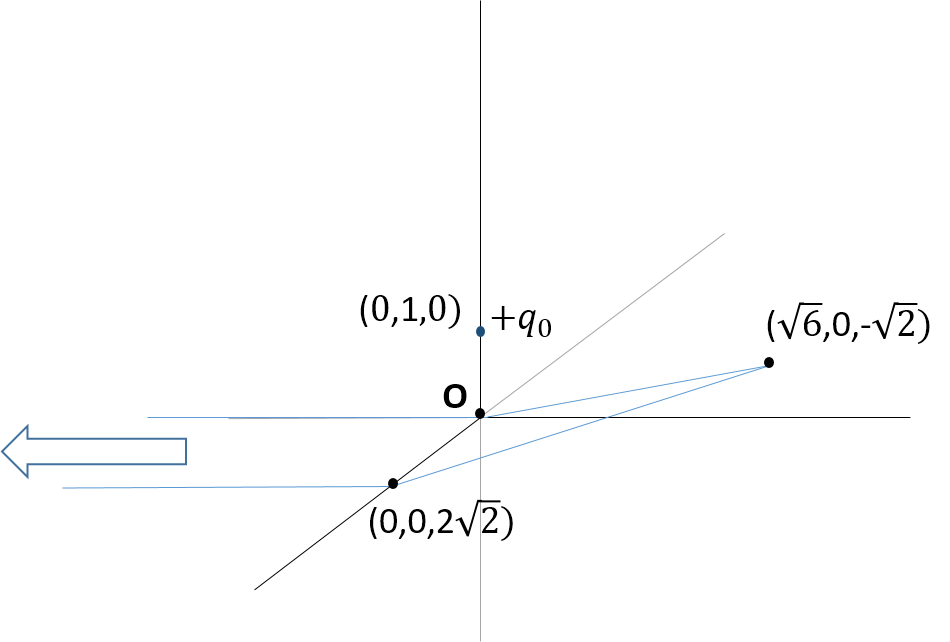Flux and symmetry
The electric flux through the plane surface (lying completely in
plane) is
where k is a positive real number. Find k.

The answer is 0.18.
This section requires Javascript.
You are seeing this because something didn't load right. We suggest you, (a) try
refreshing the page, (b) enabling javascript if it is disabled on your browser and,
finally, (c)
loading the
non-javascript version of this page
. We're sorry about the hassle.
The flux through the first one is given by 2 1 ( 2 π θ ϵ 0 q 0 ) = 4 π t a n − 1 2 2 ϵ 0 q 0 . The flux through the second one is given by 3 1 ( 4 1 ϵ 0 q 0 ) . Adding both gives the required answer.